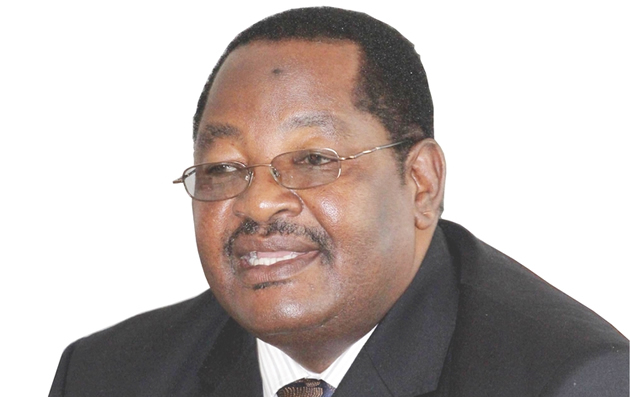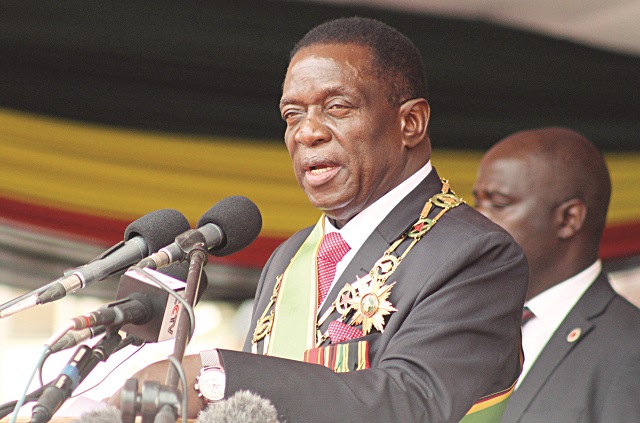The Sunday News

Feature Vincent Gono
TELLING the story of the liberation struggle and that of the heroes and heroines that executed it and brought the country independence at the expensive cost of their lives, blood, tears and sweat from detention camps such as the notorious Gonakudzikwa is likely going to remain a pipe-dream if the area remains infested with landmines which are hindering the carrying out of feasibility studies and its reconstruction as an important historical monument.
Although the camp remains one of the most outstanding areas from where the story of political detainees, the execution of the liberation struggle and the country’s independence could be told, its development to become a national heritage centre is moving at a snail’s pace due to the war time machinations of the Smith regime.
In an interview, the National Museums and Monuments of Zimbabwe (NMMZ) director Dr Godfrey Mahachi said the major handicap with Gonakudzingwa in terms of their ability to carry out development work was the issue of landmines. He said the area was heavily mined and emphasised the need for the Defence Forces to conduct demining in the area to allow them to work freely. The intention according to him is to create a theme park — a recreation of the camp or some sections of it to give visitors some appreciation of what restriction and detention camps were like.
“Our aim is to reconstruct some of the structures and to then interpret the camp life from different perspectives, political, social in relation to the experiences of the camp inmates and the impacts of the entire system not only on the families of the affected inmates but also on the national political development that then ensued, leading to the decisions by the liberation movements to go for the armed struggle. A theme park therefore recreates and also interprets the site to enable visitors to understand the values of the heritage site,” said Dr Mahachi.
He said the information was there but they would generate more from research on site. His department, he said, would conduct archaeological as well as oral interviews with both surviving inmates and the local communities that were more directly impacted by the establishment of the camp. Asked about the budget, he said they could not draw a budget before the scale of the work to be done was defined.
“We know what we want to do but will need to be on the ground to establish what exactly each component of the project will require. We however, can’t phase the implementation budget to manage the resource requirements given our rather restrictive operating environment resource wise,” he added.
Gonakudzingwa in Chiredzi District of Masvingo Province was established by the oppressive white regime in April 1964 after WhaWha in Gweru was set up in February of the same year and later Sikombela in Gokwe South District in Midlands Province in June 1965 for purposes of muzzling and curtailing the revolutionary movements that were growing in the early to mid 1960s.
The three detention camps were constructed as a quick response to the growing number of African nationalists who felt the need to fight the repressive, arrogant, snobbish and hypocritical white regime.
There were striking similarities in the geographical location of the three detention camps. Apart from providing punitive accommodation to the black nationalists, the camps were established in the remote, inaccessible and impassable parts of the country.
Sikombela served mainly as a Zanu-PF detention camp. It is where nationalistic leaders such as President Mugabe, the late Cde Simon Muzenda, Cde Enos Nkala, Cde Eddison Zvobgo, Cde Edgar Tekere and many others were detained at the height of nationalistic revolts while most of those from the PF Zapu side were detained at WhaWha and Gonakudzingwa.
Gonakudzingwa was just as the name suggests — a place where those who have been removed from society lived. And what it means is that the nationalist movement leaders who were cast at these camps were regarded as purveyors of a deadly contagious disease that was unwelcome to the social order hence the need to quarantine them.
Leaders of the revolution mostly from Zapu who were detained at the notorious detention camp that is regarded as the equivalent of the Robben Island in South Africa where Nelson Mandela was banished include but are not limited to Cde Joshua Nkomo, Cde Naison Ndlovu, Cde Josiah Chinamano and his wife Ruth Chinamano, Cde Joseph Msika, Cde Jane Lungile Ngwenya, Chief Mangwende, Njini Ntuta, Willie Musarurwa and many others.
The detention camp was established in the extreme eastern parts of the country near the border with Mozambique in the Chiredzi district of Masvingo Province. It was located within the expansive wildlife zone of Gonarezhou, an area that was and is still famed for being home to big fauna such as elephants, buffalos, lions and rhinos.
According to Munyaradzi B Munochiveyi in his book Prisoners of Rhodesia — Inmates and Detainees in the Struggle for Zimbabwe Liberation 1960-1980, by any measure Gonakudzingwa was unattractive for human habitation. Temperatures could sour to peaks of 118 Degrees Celsius. The area was exceptionally dry. It had an altitude of 1 000 feet and consequently hotter than the rest of the country. Malaria was endemic in the region.
Because of its geographical location that was made worse by its arid conditions the detainees believed and accepted that it was more of a deliberate ploy by the Rhodesian authorities to make them suffer in the camp than just a matter of mere accident or coincidence.
And true, the belief was that after experiencing a torturous life at Gonakudzingwa, the leaders were going to be deterred and go back to influence their black constituencies against rising up against the white minority rule. The late Father Zimbabwe Cde Joshua Nkomo noted in his autobiography with a deep sense of humour how his colleagues and friends Cde Msika and Cde Stanislas Marembo had developed a habit of taking an early morning walk around the detention camp.
He wrote, “One morning they met a lion, a big male on the path and they came flying home. “The animals (that lived around Gonakudzingwa) were dangerous but not hostile by intent . . . it was their jungle, not ours. But nobody was going to escape while they were around.”
Munochiveyi further noted the experience of detained political activist Victor Kuretu during his first days at the detention camp.
He had this to say, “When I first got to Gonakudzingwa, I remember wondering whether we were still in the same country or not. The place was unbearably hot and we used to pass blackish sweat during the first days. The water there was no good. When we boiled the water we would remove some whitish residue which looked like lime mineral. We had problems with wild animals at Gonakudzingwa because it was located in Gonarezhou wildlife reserve. At night and early morning, lions would roar very loudly. We also saw elephants roaming near the camp.”
The camp was therefore deliberately set in an animal area to ensure that even with no security whatsoever, no one was going to attempt to escape. And yes, there was no security at the camp for escaping was just like jumping from the frying pan into the fire. The detainees were convinced that the authorities knew that no one would dare attempt to escape because the lions and elephants made sure they would not run away.
And with the aggressive animals, they knew that they would not be worried about supervision and security and to synthesise that argument the only supervision was from a little frontier police post on the Rhodesia/Mozambique railway line called Villa Salazar.
Detention camps of Gonakudzingwa’s nature were therefore established to halt any liberation movement’s pursuits at freeing the country from the tight grip of the oppressive Smith regime and they were in essence torture and brutality centres.
Dr Mahachi highlighted that although the makeshift structures that Gonakudzingwa were no longer erect, efforts were in place to make the detention camp a historical monument from where the political history of the country could be told.
He said the challenge was that the architecture of Gonakudzingwa was not like that of Sikombela in that Gonakudzingwa was more of a makeshift structure that was erected on a concrete slab. There were metal structures and rondavels which had no permanence.
“People need to understand the architecture of Gonakudzingwa. It was not a permanent structure but a kind of makeshift one. We therefore do not have anything monumental, it is the same with Sikombela, there are no structures to talk of but we have done all the work at Sikombela and wish to do so at Gonakudzingwa. With Sikombela we have finished the comprehensive survey and we wish to do that with Gonakudzingwa too but we are waiting for the area to be cleared of landmines,” said Dr Mahachi.
He assured the nation that his department was going to do everything to make sure the history of the country was told through the monuments.



